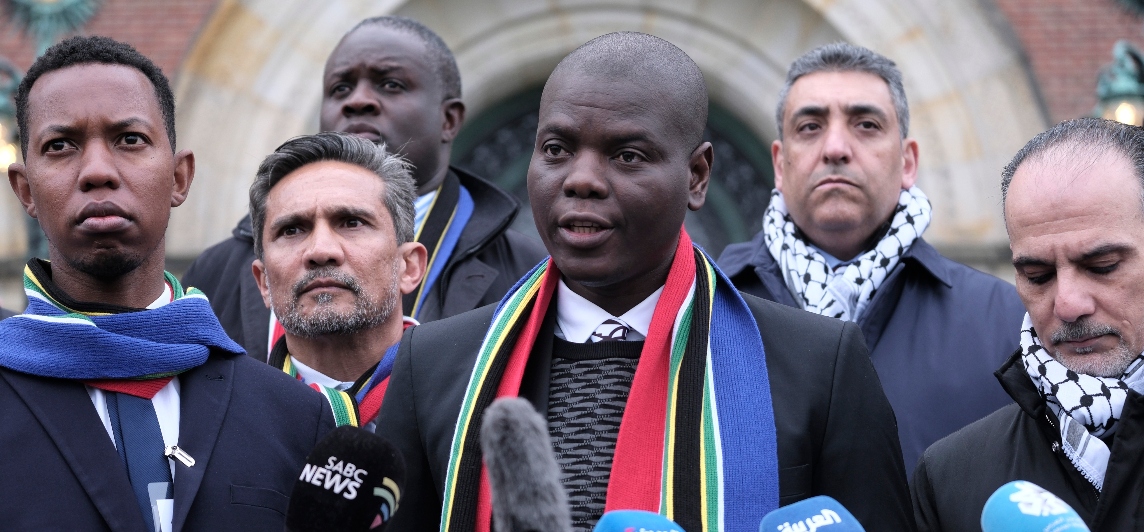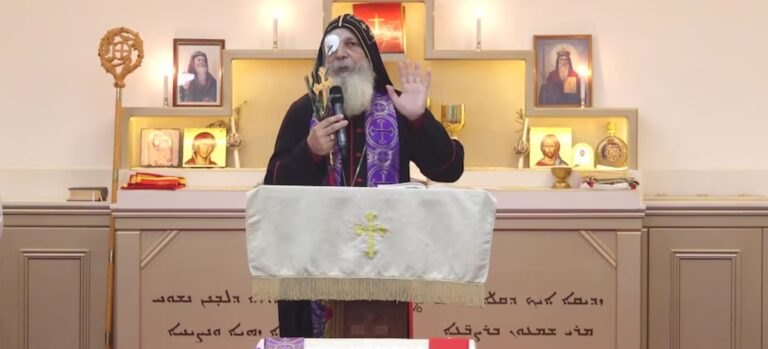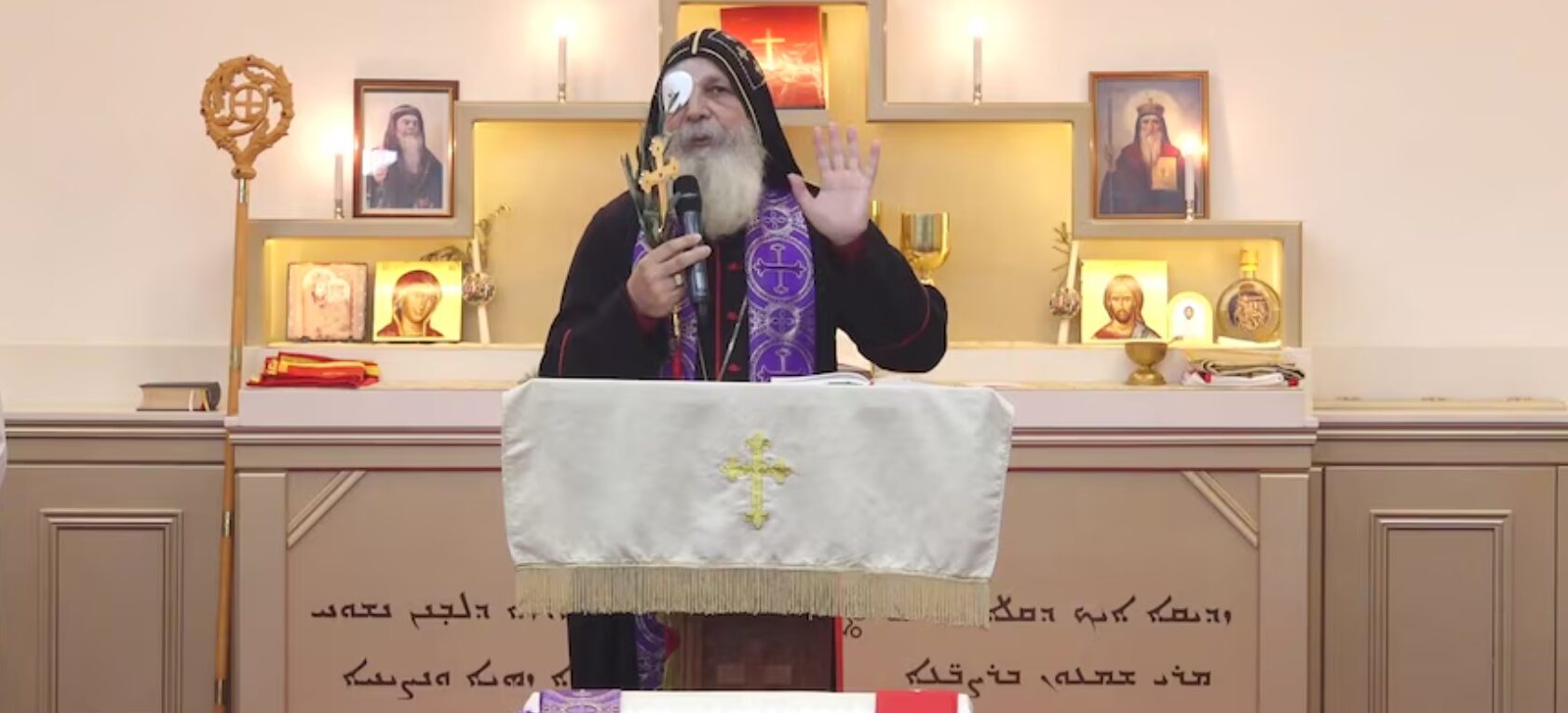
South Africa’s Case Against Israel, and the Linguistics of Genocide

by GRACE JOHNSON
Since the October 7 attack by Hamas, Israeli forces have sustained devastating attacks on occupied Palestinian territories, with the death toll of civilians now reaching 24,000.
Last week, the South African government presented a case to the International Court of Justice (ICJ) in The Hague, saying the Israeli government’s actions against the Palestinians could amount to genocide.
The case could go on for years, but South Africa is asking that the world court demand Israel to stop its disastrous strikes on Palestine, resulting in the destruction of hospitals and obliteration of food and water supplies.
Israel has rejected the case as libellous and hypocritical.
As war on Palestine reached its 100th day, Prime Minister Benjamin Netanyahu spoke after two days of hearings at the ICJ, saying Israel will pursue its war against Hamas until victory.
“No one will stop us, not The Hague, not the axis of evil and not anyone else,” he said in televised remarks, referring to Iran and its allied militias.
Language has already been identified as a powerful weapon in the war being waged on Palestine. As a brief example, we very often see those in power in Israel, and Western media outlets, describing Palestinians “dying” from airstrikes, as though incidental, rather than “being killed by”.
Netanyahu has said, “There is no such thing as a Palestinian nation. There is no Palestinian history. There is no Palestinian language.”
He has referred to Palestinians as “human animals”, talked of making Gaza a “slaughterhouse” and “erasing the Gaza Strip from the face of the earth.”
The use of language to minimise, deny or even justify violence inflicted on occupied Palestinian territories predates the October 7 attacks. Rather, this pattern of dehumanising Palestinians and delegitimising Palestine as a state has emerged over the past 75 years of Israeli statehood.
Such rhetoric was at the heart of South Africa’s case against Israel, saying that Israel’s language is proof of their intent to commit genocide, a punishable crime in itself.
Defining genocide
The crime of genocide is outlined in the 1948 United Nations Convention for the Prevention and Punishment of the Crime of Genocide.
It is defined as acts committed with intent to destroy, either in part or in whole, a national, ethnical, racial or religious group, including:
- killing members of the group
- causing serious bodily or mental harm to members of the group
- deliberately inflicting conditions of life calculated to bring about a groups physical destruction, in whole or in part
- imposing measures to prevent births
- forcibly transferring children.
The Genocide Convention is intended not only to prosecute individuals and governments that commit genocide, but also to prevent it from happening.
Genocidal acts are punishable, but so are attempts and incitements to commit genocide, whether or not they are successful.
But how is intent to commit genocide judged? How can incitements to genocide be qualified?
The linguistics of genocide
City Hub spoke with an expert in forensic linguistics, Dr Awni Etaywe from Charles Darwin University.
“Forensic linguistics is a branch of applied linguistics,” he explained. “We apply linguistic techniques to investigate and aid in establishing evidence of crimes in which language that forms part of the evidence.”
It is up to the judge to decide whether or not to accept the evidence, but part of the evidence presented in court would be of a linguistic nature, especially when it comes to crimes carried through the use of language. This could be plagiarism, threatening communications, but also incitement to hatred and genocide.
The application of forensic linguistics allows us to deconstruct not just the elements of speech, such as words chosen and their significations, but also the ideology behind an utterance.
“Linguistics in the context of incitement to genocide can primarily focus on positioning and speech functions,” Dr Etaywe explains. “Language can be used to position people as being bad, as animals, etc., and once people are positioned as such, that will deny them certain rights.”
These rights exist regardless of what inciters or criminals are saying, he specifies, but in a linguistic framework, “Once you admit you are dealing with a human being that has human rights, with rights come obligations, you have to comply with international law and Universal Declaration of Human Rights.”
“But to justify inhuman treatment, you need to consider the other as inhuman, and this is an ideology.”
Israel’s Minister of Defence Yoav Gallant has positioned victims in Gaza as “animals”, hence warranting inhuman treatment.
“I have ordered a complete siege on the Gaza Strip. There will be no electricity, no food, no fuel, everything is closed. We are fighting human animals, and we are acting accordingly”, he said.
Dr Etaywe breaks the statement down, saying “The first part is that physical element, that is the structure and killing. And the second is the intent, the mental element. So by the use of declarations, and declarative speech acts, that clearly shows the intent of imposing complete siege on the Gaza Strip.”
“When he says ‘We are fighting human animals and we are acting accordingly’, it shows that whatever actions they are taking are based on the lack of recognition of Palestinians’ freedom and humanity, which is a strategy used to morally disengage from acknowledging the other and then the obligations that will come based on this kind of recognition or lack thereof.”
“So we have two things at the same time. First is a declaration, that is a declarative speech act, where the world should change to fit the mind of the speaker. We have dehumanisation, that is the positioning of the victims as animals, and thus they are not worthy of humane treatment.”
“And we have the inclusive ‘We’, which entails a collective intentionality,” he added.
Religious justifications
Netanyahu has similarly incited his soldiers using directive acts (used when the speaker wants something done for him or her) by invoking religious texts to legitimise genocidal acts.
With emphasis added by Dr Etaywe to highlight certain speech functions (elements of the sentence that yield insight into the speaker’s intent), the following is one of Netanyahu’s most revealing ‘directive acts’ on the linguistic front.
Netanyahu said, “You must remember what Amalek has done to you.”
Dr Etaywe says, “This command is infused with a biblical invocation of a genocidal order, where the biblical text reads as: ‘Now go, attack Amalek, and proscribe all that belongs to him. Spare no one, but kill alike men and women, infants and sucklings, oxen and sheep, camels and asses.’”
Dr Etaywe explains, “Direct and public incitement to commit genocide mirrors violent extremist language, and violent extremists and terrorists in general use religious texts to sanctify and to legitimize the violence and to make what they are doing based on an authority.”
“So they are legitimising the violence based on the kind of authorisation by invoking and referencing religious texts.”
This has been used in other alleged genocidal contexts, such as Boko Haram in Nigeria, which saw the usage of religious texts to legitimise the mass killings of Christians.
This often combines all too well with dehumanisation, as seen in Namibia, Rwanda, Nanking, Latvia, and the Holocaust.
Not all about words
Dr Etaywe reiterated that in the application of forensic linguistics, it’s not all about words.
“Words are actually the lowest level of analysis,” he said.
Analysis starts with speech events, generally defined as an instance in which communication occurs.
“We look first at the speech events, so the activity in which this language was used and articulated to help us understand the function of it within that context.”
“Then we look at schemas, that is, how the author or speaker views the world, how they talk about what is being talked about. How does he view Palestinians? How is he talking about Gaza, how does he position Gaza? We glean information from that language.”
“After exploring schemas, we gather information regarding the speaker’s agenda, for example, eliminating the Gaza strip, forcibly deporting the Gazans, establishing illegal settlements in Gaza, etc. Next, we analyse conversation strategies that reveal information about hierarchical relationships, such as commander and subordinate schemas.”
“Following that, we decode speech acts and the intent encoded within them,” he continued.
“Finally, we scrutinise clauses, phrases, and lexical choices that are repeatedly used by various Israeli leaders within the context of the war on Gaza. The latter process uncovers agreements, acknowledgments, or at least non-objections to a worldview and agenda at a community level.”
It is only after looking at the surrounding context and broader agenda of the speech event that forensic linguists look at the words. But the study of how language is used in the war on Gaza demonstrates that violence is not only inflicted on bodies and buildings, but also on the legitimacy of the Palestinian state, human rights, and cultural and historical memory.









